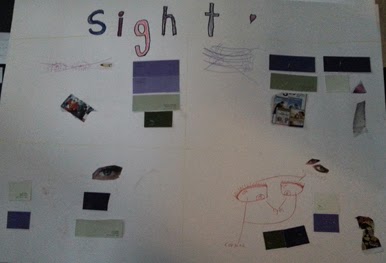October 2014
Mrs. Clark's Grade 1/2 Class
September was a great but busy month. We have already established norms for Daily 5. This is really amazing, however, because of the number of students and the need for smaller groups we now have a Daily 6. I'm really impressed with how quickly this group of children was able to understand the Daily "6" process and consistently engage in the expected behaviors. The Daily 6 consists of; read to self, word work, read to someone, listen to reading, Ipads and work on writing. I think part of the reason they love it so much is because I do and there is so much independence and freedom of choice encouraged in this process. These Grade 1/2's love to work on their own, in pairs and in small groups!
We have been working on our Comprehension strategies. We completed our study of the book "Chalk" and created a bulletin board as our final project.
We began working on a new book "How To Be" by Lisa Brown.
We began working on a new book "How To Be" by Lisa Brown.
This is a book about how to be a: Bear Monkey Turtle Snake Spider Dog.This is a book about how to be a Person.
The comprehension strategy "questioning" has been the focus for our book study. “Thoughtful readers ask questions not only as they read, but also before and after reading.
We began our book study by looking at the title and cover and generating questions. For example: Why is the book called "How to be?", What do the colors mean? Why are there animals in the picture? As we read and discover the book we attempt to answer the questions and gain a deeper understanding of the author's purpose and message. As Amani, a Grade 2 student in our class stated, " The book means that a person can be anything they want to be." Wonder, infer and discuss is an important part of this process. We will be learning more about "background knowledge". Activating prior knowledge and building background improves understanding.
We began working on our final project! We are using the book and the structure of the text and pictures as a model for our own "How To Be?". Students chose an animal. We grouped students who chose the same or very similar animals. Their task was to create several movements, actions, sounds to show how their animal behaves. We presented these to the class and I made a chart recording students ideas. The whole class discussed how this animal can be compared to a human, what behavior or characteristics are similar. Our next step is to use these words and phrases to write our own model of Lisa Brown's book. We will write first and then illustrate the words and phrases we chose to describe our animals. I am hoping to use the Ipads to photograph and record students discussing their project. I will post the finished product soon!


































.JPG)








